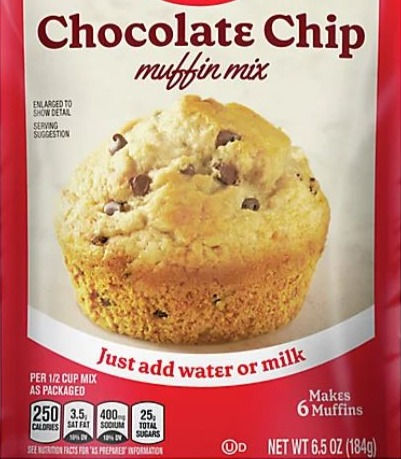Why Boxed Mixes are Bad
- Sydney Dias

- Jan 19, 2023
- 3 min read
Baking is many things: a science, a job, something that you are forbidden to do because the last time you tried you exploded cupcakes in the oven. But the one thing that baking absolutely should not be is a box.

I investigated the ingredients of different types and brands of boxed mixes and concluded that the most common ingredients in boxed mixes overall are enriched flour, sugar, and monoglycerides. In a lot of them, enriched flour was the first ingredient, and sugar was the second, which means that there is an excessive amount of sugar in boxed mixes. That isn’t even counting other sugars, like dextrose, that are found in many boxed mixes. One boxed mix I found boasted having no artificial flavors, but the second ingredient was sugar and the third was dextrose. Read more to find out what all of these ingredients are, and why they are bad for you!
Enriched flour is a highly processed flour that is present in most boxed mixes. While it is being processed, twenty essential nutrients are lost, but only five are added back in a later step. Those five are thiamine mononitrate (vitamin B1), riboflavin (vitamin B2), niacin (vitamin B3), folic acid (a form of vitamin B9), and iron. Processing also removes the bran and the germ, leaving just the endosperm. The bran is the outer layer that is rich in fiber.

That fiber—the bran—is what slows the starchy endosperm as it’s broken down into glucose in your body, which would provide your brain with a steady supply of glucose…if it hadn’t been removed during processing. Instead, your body breaks the starch into glucose all at once, causing your blood sugar to spike, which in the long run can lead to things you don’t want, like insulin resistance, which is a common precursor to diabetes. Enriched flour is basically the nice way of putting it.

I’m sure you know what sugar is, but there is more to it than you think. Like the names. I just found out that granulated sugar, refined sugar, white sugar, and table sugar are actually all the same thing. It is a type of sugar that is made up of sucrose, which is 50% glucose and 50% fructose. When you see “sugar” on a nutrition label, that’s what it is normally talking about.
Studies connect higher intakes of sugar with higher risks for heart disease. For example, consuming high amounts of sugar overloads the liver. The liver converts dietary carbohydrates, like sugar, to fat. Over time, that fat builds up, which could turn into fatty liver disease. Fatty liver disease is a contributor to diabetes, which elevates your risk of heart disease. It also can cause weight gain and can even contribute to depression. This dangerous sugar can come in many forms, from table sugar to dextrose to corn syrup. Manufacturers will often add several types of sugar to a product so that sugar isn’t one of the first few ingredients on a label. We recommend, based on the American Heart Association, that women and children have no more than 6 teaspoons (25 grams) of sugar in a day, and men should have under 9 teaspoons (38 grams) in a day.
Monoglycerides (the last ingredient I’m going to talk about), as well as diglycerides, are emulsifiers. Emulsifiers stop oil and water from separating. They also extend the shelf life and improve the texture and consistency of packaged foods. They also can contain trans fat.
Dun dun dun.
Here’s a crash course on trans fat: it’s bad. In 2016, the FDA (Food and Drug Administration) finally recognized that trans fat isn’t safe for food use. About time. Unfortunately, even though mono-and diglycerides may contain trans fat, it isn’t required to put that on food labels. And by the way, trans fat is linked to heart disease and other health problems. According to the CDC, around 697,000 people died in 2020 from heart disease, and according to Dr. Axe, trans fat is linked to 50,000 fatal heart attacks every year. Do the math. Trans fat + people=bad.
I hope this scared you into never buying boxed mixes again! If you would like to learn more about what you are eating, check out our other blogs and pages.









Comments